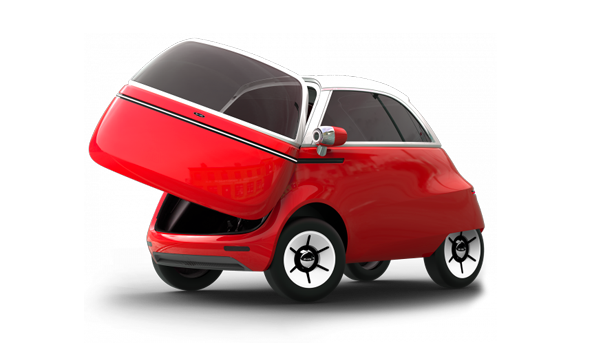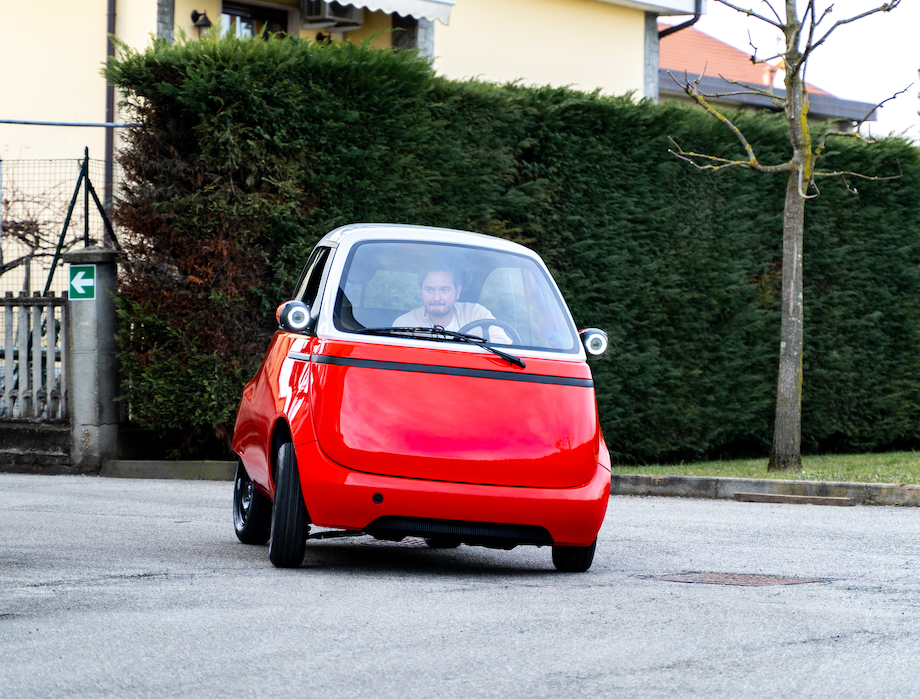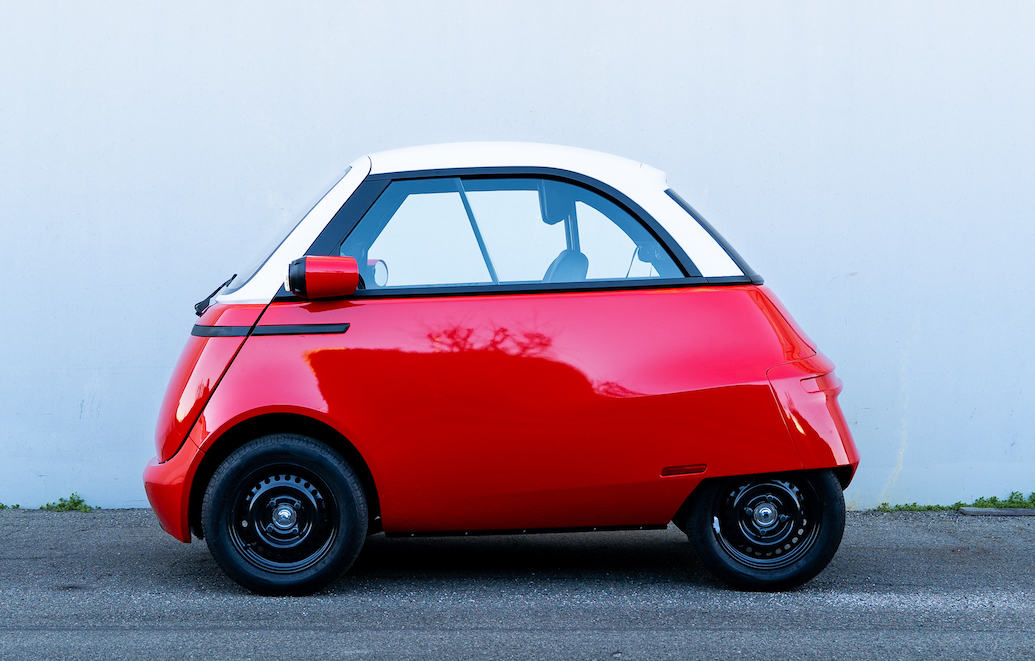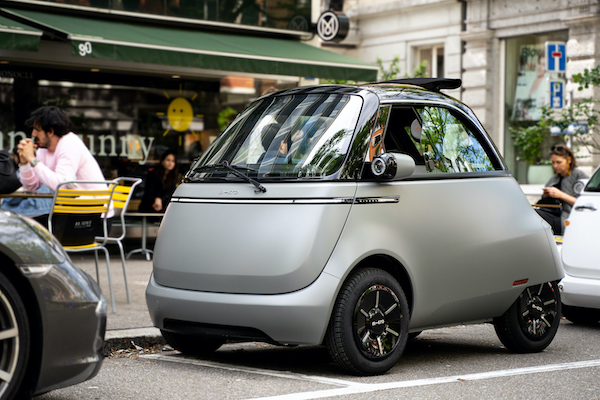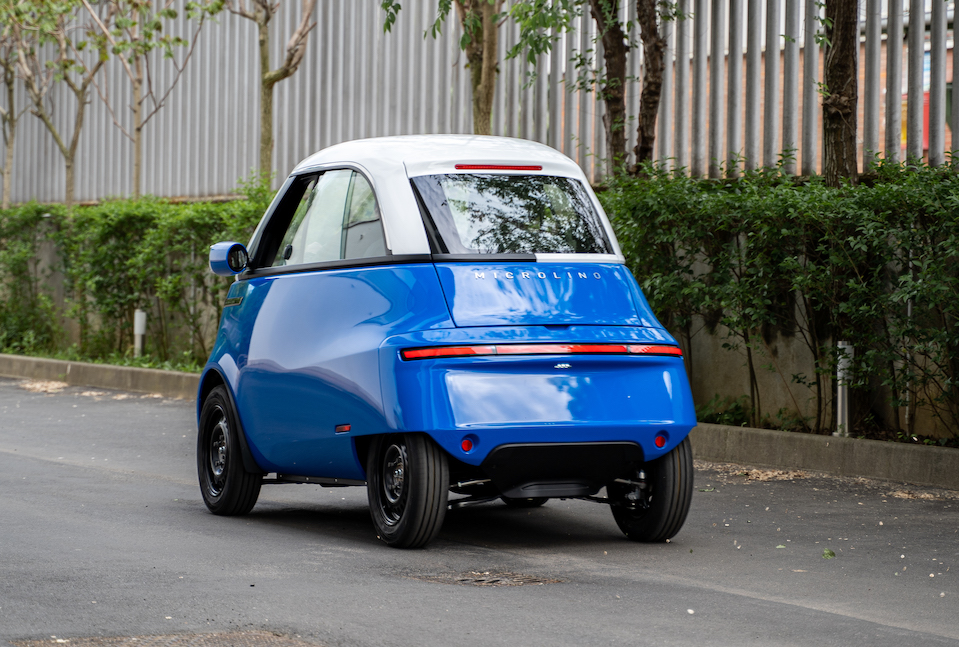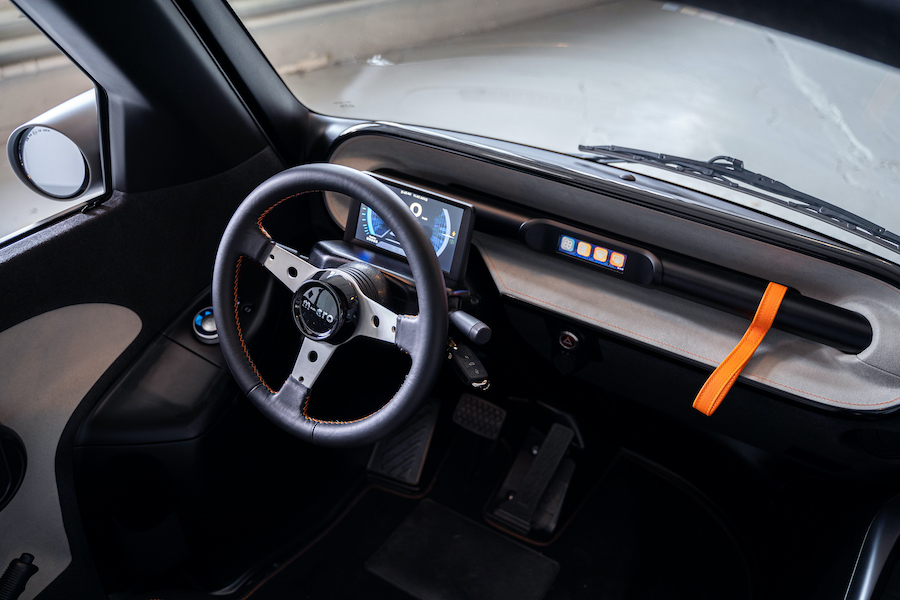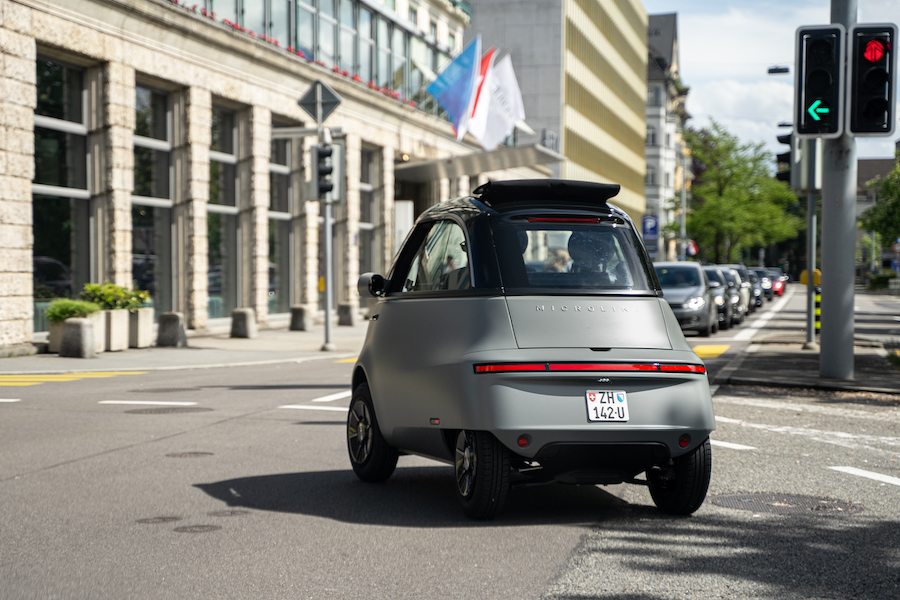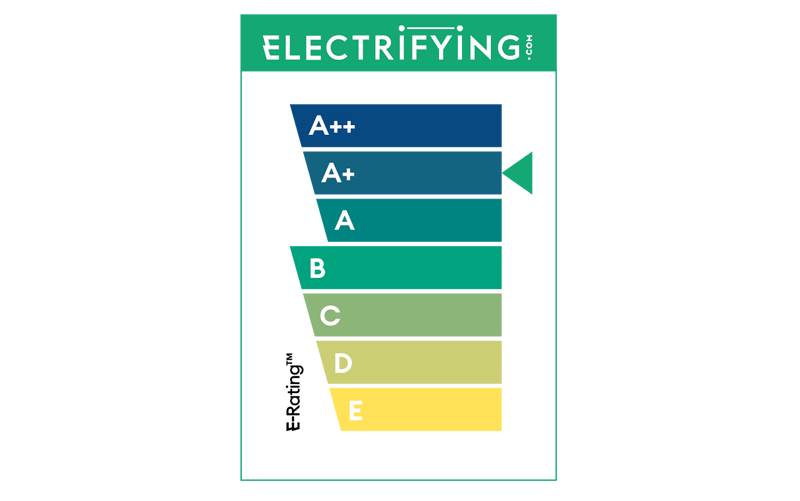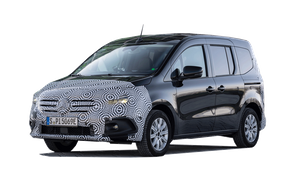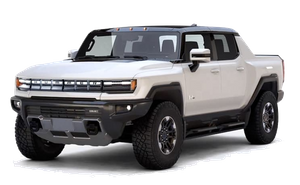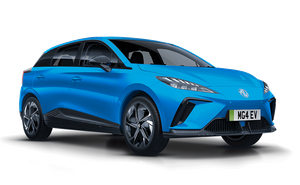The Microlino is brainchild of Merlin Outober, who has steered the project through turbulent waters to reach the launch stage. As with many small automotive start-ups, Microlino has suffered more than its fair share of ups and downs. The fact that the current prototype (that we were lucky enough to try) is a completely different design to the original gives you some idea of the growing pains the Microlino team have had to endure.
To look at, the Microlino is a lovely, lovely thing. Even the restrained matt paint of the prototype can’t hide the graceful lines and neat detailing that have clearly been a labour of love for the design and engineering teams.
The tiny headlights are attached to the wings like feelers and shine with LED technology - giving the Microlino a unique light signature at night.
But underneath the retro panelwork is a thoroughly modern set of underpinnings. While the first prototypes were built on a tubular steel chassis which resembled a cage, Microlino made the bold decision to start again with a pressed steel platform that looks uncannily similar to the Tridion cell used by Smart. As a result, the car that customers will be able to order later this year has a far stronger construction than almost everything else at the same price point.
In terms of dimensions, the Microlino is small. Very small. It’s just 2.5 metres long and 1.5 metres wide, which is almost exactly the same as the first-generation Smart. It sits on 13-inch wheels and, like the original Isetta, is considerably wider at the front than it is at the back. Crucially, however, the Microlino has two wheels at the rear rather than the Isetta’s single rim. And just like in the 1950s, the door is hinged at the front.
Climb through the door and around the fixed steering wheel column and its like stepping back in time. The full width bench feels odd after a lifetime of conventional car seats and the fact that the dashboard swings out with the door takes some getting used to. As the door closes, it feels as though you’re about to go on a theme park ride.
Thankfully, the retro approach doesn’t extend to every element of the Microlino interior. There are proper seat belts (the original didn’t have any) and there’s a small display screen positioned above the steering wheel along with basic switchgear on the dash panel and the left of the steering wheel. Sadly, the steering wheel feels a little out of place and lacks the retro flair of the rest of the cabin. Let’s hope it gets replaced by thin-rimmed old-style wheel by the time the design is ready for production.
The Microlino will come with two battery options; an 8kWh for the entry level model and a 14.4kWh pack for those who want to venture further afield. Microlino claims that the smaller battery has a range of up to 77 miles while the larger pack can do 124 miles. At first glance, both range figures seem on the high side, but bear in mind that the Microlino tips the scales at just 513kg which is a third of the weight of a basic Renault Zoe. With far less weight to lug around, the 15bhp electric motor is perfectly sized to eke out every last watt of power from the pack.
The Microlino doesn’t come with any provision for rapid charging - which makes sense given the tiny battery. Instead, it can charge from empty to full on a three-pin plug in four hours. The maximum charge speed is a modest 2.5kW, so most owners won’t require higher powered wallbox to be installed.
Top speed is 56mph (the maximum allowed for the class) and the 0-30mph dash takes around five seconds. As with all electric cars, the Microlino feels much livelier that the figures suggest and the instant hit of torque (though modest) is enough to keep you entertained.
During our short drive, it proved more than capable of keeping up with traffic while its narrow frame made light work of tighter urban streets. The one thing you do have to get used to is attention. The Microlino has more road presence than a Lamborghini and unless you like the idea of people pointing and taking photos of you, you might be better off choosing something a little more under-the-radar.
The Microlino has way more kit than the original, but that’s not much of a claim in 2021. Built to European Type L7e regulations (like the Renault Twizy or Citroen Ami) the Microlino occupies a curious no-mans land between scooters and cars. As such it isn’t required to have airbags or stability control as standard passenger cars are. That said, company boss Merlin Outober told us that both are in the pipeline for a future generation of the car.
As for other kit, it’s pretty sparse. The optional infotainment system is effectively a Bluetooth connection for a smartphone, and there’s a basic but powerful heater for winter driving. There’s no air-conditioning, but the side windows slide open and deliver a decent blast of air on the move.
Microlino is planning to show the final production version of the car at the Munich Motor Show in September, after which it will open the order books. Production will be based in Italy and the Turin plant is gearing up to produce up to 10,000 units a year. The price? In Europe, the Microlino will cost from 12,500 euros for the entry-level, small battery model. At present, the firm has made no announcements regarding right-hand drive production, although it will be technically possible to build. Based on those prices, UK customers could be looking at a starting price of just over £10,000. That compares to £12,000 for the entry-level Renault Twizy with no doors, so the Microlino certainly looks competitively priced.










